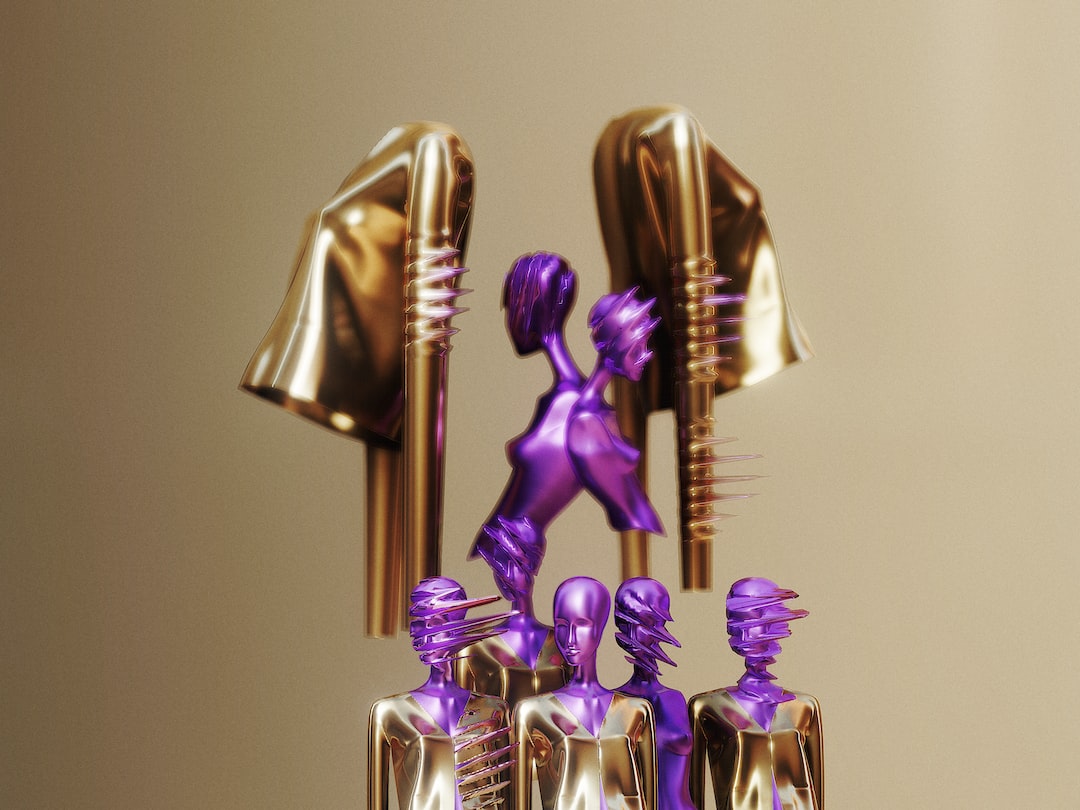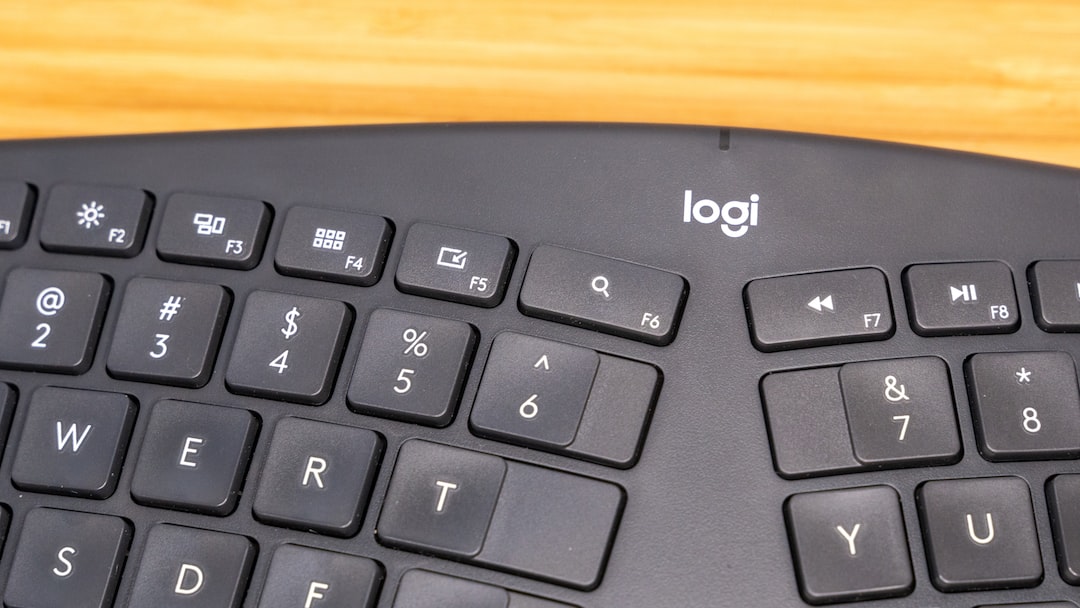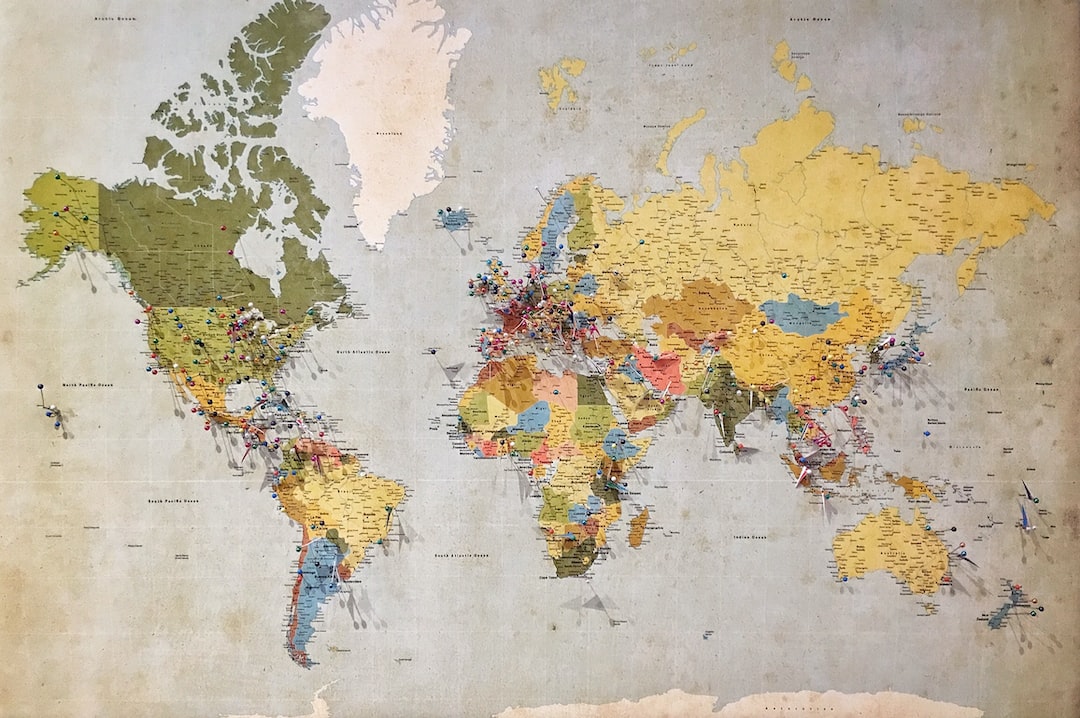Alright, fam, let’s take this for a spin: imagine living in a world where you can actually bring your wildest design ideas to life, straight out of your brain and into the real world. No, we’re not talking about some sci-fi movie or a future that’s far away. We’re talking about right now, today, in the here and now, thanks to the jaw-dropping power of 3D printing. 🎨
3D printing isn’t just for making phone cases or action figures or even food—though, let’s be real, that’s pretty dope on its own. It’s also reshaping the way we think about art and design. Whether you vibe with fine art, fashion, or even streetwear, 3D printing is kind of the new cool kid on the block, and it’s flipping the script in some mind-blowing ways. In this article, we’re diving deep into the world of 3D printing in art and design—breaking it down so it all makes sense, but still keeping it 100. So buckle up, ‘cause this ride’s about to get real interesting. 😎
The Revolution of 3D Printing in Art and Design
Once upon a time, art was mostly paint and canvas, clay and chisels. Now, with 3D printing in the mix, it’s like art and design have leveled up—literally hitting the ‘next-gen’ button. This tech allows artists to create intricate pieces that would be mad difficult, if not impossible, to make by hand. Don’t get it twisted though—it doesn’t make the artist obsolete. Far from it. Instead, it’s like giving an artist a superpower or an expanded toolkit.
Think of 3D printing as the intersection of creativity and technology. It opens up an entire universe of possibilities, breaking down the barriers between imagination and reality. This bad-boy tech transforms how creators approach their work, providing a means to experiment and pushing the boundaries of what’s possible in the art and design world.
Take something like architecture, for example. Architects are already using 3D printing to prototype buildings and create complex, hypnotizing shapes that seem like they defy gravity. In the same way, product designers are crafting intricate, earth-shattering designs that can be iterated upon with a few clicks. In fashion? Say goodbye to cookie-cutter designs and hello to outfits that look like they’re straight out of a cyberpunk movie.
But here’s the tea: 3D printing isn’t confined just to professionals. Yep, you heard that right. Even you, chilling in your room, listening to your playlist on repeat, could get in on the action. With 3D printers becoming more affordable and accessible, many creatives who previously couldn’t afford to bring their ideas to life can now do so, altering the very fabric of the art community.
And guess what? The material possibilities are endless too! We’re talking plastics, metals, ceramics—you name it. Now, artists don’t have to rely solely on their go-to mediums like paint or clay. Nope! They can mix and match elements like a DJ crafting a fire track. Imagine sculptures made of anything from metal to resin, textured pieces, or even 3D-printed wearables! 🕶️ The shift is seismic and it’s totally changing the game.
Unpacking The Process: How Does 3D Printing Work?
Alright, let’s get a little technical for a sec without losing the vibe. So how does 3D printing actually work? Spoiler: It’s part art, part science, part digital wizardry.
The process kicks off with a digital 3D model—the blueprint. This file is created using a program like Blender, Tinkercad, or even Autodesk. If you think creating a digital model is just a bunch of nerdy vibes, think again. It’s super creative. You’re basically sculpting in the digital realm but with way more precision. Once the model is ready, you feed it into a slicer program. This app chops your 3D model into thin layers, then translates it into a language the printer understands. Here’s where it gets sick: these layers are printed stack by stack until your digital creation literally becomes real.
What’s wild is the range of 3D printing techniques available, depending on what you want to create. The most popular method, especially for home use, is Fused Deposition Modeling (FDM). This involves filament (like plastic or metal) being melted down and layered in the shape of the object. Then there’s Stereolithography (SLA), a step up in luxury, which uses UV lasers to cure liquid resin, making the final result extra crisp. For the ultra-boujee, there’s Selective Laser Sintering (SLS), where particles of plastic, ceramic, or metal are fused together using a super-powerful laser.
The strength of 3D printing lies in its versatility. Whether you’re an artist looking to create beautiful, intricate sculptures or a designer wanting to prototype a new product, there’s a 3D printing tech out there for you. And the sickest part? Each method has its own unique quirks, adding different textures and feels to the final product. Think of it as different brushes for different strokes.
But yo, before you head out and get yourself a 3D printer, hold up just a sec. Know that there’s a learning curve. It’s not insane, but yeah, just like anything worth doing, it takes effort. You’ll need to get familiar with your chosen software, understand how to set up the printer correctly, and learn how different materials behave (like a designer in a lab coat). Once you’ve got that down, though? It’s game over—nothing’s stopping you!
The Infinite Possibilities of 3D Printing in Art
This is where 3D printing starts to feel less like tech and more like literal magic. The most revolutionary thing about 3D printing in art is how it fuses the digital and physical worlds. Imagine you’ve been doodling the same epic design in your sketchbook forever—what if you could pull that concept into reality? That’s the vibe we’re talking about here, and artists across the globe are leaning hard into it. 🖼️
Take contemporary sculpture as an example. It’s all about pushing the boundaries of form, and 3D printing is the secret sauce for extreme creativity. From hyper-complex geometries to forms that seem to melt into each other like digital liquid, 3D-printed sculptures are something you wouldn’t even think were possible a decade ago. Artists like Joshua Harker are living proof of how far you can push 3D printing in fine art. His series of lace-like sculptures would be straight-up impossible to construct by hand, or even with traditional sculpting tools. The precision, the detail, the uniqueness—it’s next-level stuff.
But 3D printing in art goes beyond just sculpture. Let’s talk about installations for a sec. Public art installations have become a key part of the modern artistic landscape. Sure, they’re large and sometimes overwhelming, but they’re meant to provoke—tell stories at a scale that engages the whole community. Now add 3D printing to the mix. Imagine massive, intricate constructions with a digital twist, hovering somewhere between the organic and the mechanical. You’ve got artists like Joris Laarman and his intricate, 3D-printed bridge in Amsterdam, which is practically science fiction brought to life.
Painting and 2D art? They haven’t been left in the dust either. Some artists are using 3D printing to create ‘paintings’ with added layers of texture, intricate designs, and complexity that looks like it might just pop off the wall. Imagine walking through a gallery, and instead of seeing flat pieces of art, you’re pulled into a 3D world. Dare we say it? The difference is almost 4D.
And here’s where it gets even more dope: collaboration is becoming key. We’re seeing partnerships between artists and engineers, artists and coders, even artists and biologists. They’re using 3D printing to experiment with everything—from bio art, where living tissues are sculpted into intricate forms, to augmented reality art that interacts with 3D-printed objects. The line between art and science is becoming blurrier than ever—in the best way possible.
Fashion Forward: How 3D Printing is Shaping Style
Alright, fashionistas, time to wiggle into the runway. We’ve all seen how much fashion is defined by innovation and bold moves. Now, enter 3D printing. It’s time to rethink the limits of fabric, stitches, and seams. With 3D-printed clothing, accessories, and even shoes, designers are pushing the boundaries faster than your best TikTok transition.👗
Let’s start off with the essentials. Think about the process of traditional fashion design: sketch it out, source the materials, stitch it up, and voila—a new look. But with 3D printing, things get crazy fast. You can design an entire dress digitally and print it out in a few hours. That instantly opens up the floor to wild experimentation and quick iteration. Designers like Iris van Herpen have made waves, using 3D printing to create garments that look like they’re from another dimension. With forms that defy gravity and patterns you’d swear are from a different galaxy, 3D printing wipes the boring right off the runway.
Let’s talk shoes and accessories. Imagine walking in shoes that look like they’re carved out of diamonds—or necklaces that resemble delicate spiderwebs but are sturdier than they look. Designers like Zaha Hadid and Francis Bitonti are producing these types of pieces using 3D printers, coveting the ability to make high-fashion items that juxtapose strength and delicacy in revolutionary ways. With materials like thermoplastic polyurethane (TPU), accessories keep their flexibility but also offer a kind of strong, almost futuristic rigidity.
On top of that, fashion and gaming are colliding in new, explosive ways. Hold up, what? Yeah, you heard me right. We’re seeing more and more fashion designs being created for virtual runways before even hitting the physical world. And 3D printing? It’s the bridge between those universes. It lets you create intricate digital fashion and make it physically real. Suddenly, everything from video game avatars to those wild Pinterest style boards can exist in high-definition reality.
Now, let’s keep it real. There are still some challenges when it comes to making 3D-printed fashion mainstream. For one, affordability is still a hurdle, especially when it comes to scaling up production. The cost of materials and printers currently keeps 3D-printed fashion from hitting mass-market appeal. Plus, you’ve got durability concerns—textiles are designed for flexibility and longevity, whereas some 3D-printed materials could wear out faster than your go-to jeans. But don’t even stress ‘cause innovation always has a way of pushing past barriers. Expect these issues to fade as the tech continues evolving. 🛠️
Ethical and Environmental Impacts of 3D Printing in Design
Ok, time to switch gears. We can’t chat about 3D printing without addressing the elephant in the room—ethics and sustainability. How does this tech shake out when it comes to the environment and social good? Let’s dive in. 🌱
First up, the sustainability reputation. Traditionally, manufacturing has had a murky relationship with Mother Earth—massive waste, pollution, and energy consumption have often been the norm. But 3D printing? It’s coming through offering a potentially greener alternative. For starters, 3D printing is additive manufacturing, meaning it builds up layers to create an object rather than cutting away excess material like traditional subtractive manufacturing. This reduces waste dramatically. Plus, local production could reduce the need for shipping, cutting down on fuel emissions—it’s like a virtual high-five to the planet.
In terms of materials, we’re seeing more efforts to recycle and upcycle with 3D printing. Imagine shredding used or discarded plastic items and reusing that material for new creations. Suddenly, you’re not just making art—you’re doing it while cutting down on landfill waste. Some companies are even working on bio-based materials for printing, which are more eco-friendly than current plastic-based filaments. It’s not perfect, but it’s major steps in the right direction.
Here’s a flip side that’s worth mentioning, though. While 3D printing can theoretically reduce waste, the reality is nuanced. For instance, as with any tech, the printers themselves have lifespans—and their disposal could contribute to e-waste. Plus, there’s ongoing debate around the environmental impact of the energy-intensive heating and cooling processes required during 3D printing, especially when using certain materials. The bottom line? It’s a mixed bag, but with huge potential for future improvements.
Now let’s get to the ethics. On one hand, 3D printing democratizes design, leveling the playing field for creators across the globe. It crushes the barriers, making it easier for marginalized communities to enter traditionally exclusive design spaces. Especially in places with limited access to traditional manufacturing, 3D printing could empower localized production hubs with minimal resources. Within the communities, empowering local creators and entrepreneurs could be game-changing, offering them self-sufficiency.
But it also brings up some tough questions. For example, intellectual property issues are looming large. With designs easily shared and replicated, who owns what? How do you protect unique creations when anyone with a 3D printer can make a copy? These are questions that the legal world is still scrambling to answer, and it’s particularly relevant given the rise of digital piracy. The balance between innovation and protection is a delicate one—a tightrope walk that will need to be addressed as tech continues evolving.
Cultural Impacts and the Intersection with Tradition
While 3D printing is hyper-futuristic, it also collides in some interesting ways with traditional culture. At first glance, it seems like the two worlds couldn’t be more polar—but that’s not the case. The blending of tradition with cutting-edge tech is creating a mashup we didn’t know we needed.
Artisans and designers rooted in specific cultural traditions are discovering new ways to preserve and innovate their crafts. Think of indigenous beadwork or traditional ceramics—these ancient arts are ripe for re-imagining with a high-tech twist. In some communities, 3D printing is being used to replicate traditional motifs in ways that honor the heritage but also offer another layer of intricate detailing and structure that were near-impossible before. This creates continuity between the old school and the new wave, keeping tradition alive but fresh.
This was most clearly seen with the rise of 3D-printed cultural artifacts. Reconstruction projects around the globe are using 3D printing to replicate valuable relics and structures lost to time or destruction—whether due to natural disasters, wars, or plain old decay. This isn’t just about creating copies; it’s about offering a new way to engage with history and preserve fragile cultural heritage. For example, museums can now display accurate replicas of artifacts too fragile for public display, allowing more people access to culture and history they may not have otherwise experienced.
Moreover, you see some designers working in collaboration with local craftspeople to create fusion pieces, which are the ultimate cultural remix—blending ancient skills with futuristic tools. We’re seeing 3D-printed kimonos, masks, and even modern jewelry pieces inspired by ancient designs, where every element—from pattern to material—is a nod to history but with a modern flair. It’s cultural continuity reimagined for the digital age, all while keeping the soul intact.
But with this fusion also comes questions of authenticity and appropriation. When do art and design innovate and pay homage, and when do they cross the line into cultural appropriation? These concerns echo throughout the community and require us all to stay vigilant, always honoring the roots of what we borrow from. Combining respectful curiosity with artistic expression will be key to navigating this unique space.
The Business of 3D Printed Art and Design
Hold up—let’s not forget about the business side of things. As much as 3D printing is a creative outlet, it’s also an entrepreneurial goldmine waiting to be discovered. 🎯
For artists and designers, 3D printing offers a new revenue stream—creating highly functional prototypes, limited-run pieces, or customized commissions that would otherwise require extensive resources. We already see independent creators setting up Etsy shops, selling 3D-printed jewelry, home décor, or even licensed fan art, keeping that side hustle strong. Because everything happens on-demand, you only need to print what you sell. Less waste, less overhead, more paper in your pocket.
Customization is the name of the game here. Gone are the days when mass-production was the only viable option. Now, thanks to 3D printing, smaller businesses can thrive by offering personalized products. Whether it’s customized earrings, bespoke phone cases, or even personalized wearable art, consumers are vibing with items made just for them. It’s about creating something unique—think of it as the antidote to fast fashion.
And what about the collabs? Larger brands, always on the lookout for the next big thing, are starting to recognize the value of this tech. We’ve seen sneaker giants like Adidas dip their toes into the world of 3D-printed shoes, using the technology to craft soles with an unprecedented mix of support and flexibility. It’s only a matter of time before more brands catch on, integrating 3D printing into their supply chains for everything from prototypes to personalized customer experiences.
Just starting your own 3D-printed hustle? Keep in mind, this venture is not without its challenges. Like we mentioned earlier, the cost of materials and the learning curve could be barriers. You’ll also need to stay creative with your marketing—given the novelty factor of 3D printing, these items might need a bit of an extra push to convince buyers of their value. But hey, if you’re doing something truly unique, you’re probably already on folks’ radars. 🚀
How 3D Printing is Changing Education
Beyond business, let’s talk about how 3D printing is basically transforming the way we learn, especially in creative fields. 🔥
In schools and universities, 3D printing is fast becoming a fixture, especially in fields like industrial design, fashion, and fine arts. No longer confined to tech departments, 3D printers are making their way into art classes, exposing students to this hybrid world of creativity and technology. Imagine working on a design project where you don’t only sketch a chair but actually print a scale model of it. It’s like leveling up from 2D to 3D overnight.
For older generations, design education was mostly about drafts, blueprints, or flat designs. But now, students are painting their visions into reality—literally. This hands-on experience allows them to experiment and iterate faster, learning more effectively by seeing their mistakes in actual models, not just on paper. It also makes cross-collaborative learning possible, with design students bouncing ideas off of engineering majors and computer science students joining the party too.
As learning gets more interactive, in general, 3D printing promises to keep things fun and fresh. Whether it’s printing out anatomical models for a biology course or creating ancient artifacts in history class, the potential applications are endless. Plus, students who get hands-on with 3D printing early on are gaining valuable skills they can use in the workforce. Industry pros are already looking for talent that can bridge the gap between creativity and technology—and that could be your ticket to the big leagues.
But let’s also keep it real—while 3D printing tech in schools is spreading, it’s still not as widespread as it should be. The tech is expensive and schools with limited budgets struggle to incorporate advanced tools into their curriculums. However, as the cost of 3D printers falls, we could see more schools adopting this gamified approach to learning. And let’s be honest, the more accessible this tech becomes, the more it’ll change the world.
FAQ: 3D Printing in Art and Design
What is the main benefit of using 3D printing in art and design?
The main benefit is that it allows creators to fully manifest complex, conceptual ideas with a level of precision and detail that would be either very difficult or impossible to achieve by hand. Whether it’s intricate sculptures, avant-garde fashion, or functional prototypes, 3D printing breaks the boundaries between what’s possible in your mind and what you can actually create.
What types of materials can be used in 3D printing?
You can use a multitude of materials ranging from plastics and resins to metals like titanium, even biodegradable and eco-friendly materials. That said, the type of material you choose can depend heavily on the specific 3D printing method and the intended use of the object. From wearable art to functional objects, the material possibilities are vast.
How expensive is it to get started with 3D printing in art and design?
Costs have been dropping, but they’re still a factor. Basic FDM 3D printers can range from a few hundred to a few thousand dollars for higher-end models. Materials like filament or resin also add recurring costs, but there are plenty of budget options that won’t break the bank. The real ‘cost’ might be the time investment in learning the nuances of the tech. But consider it an investment in your creativity game.
Is 3D printing art purely digital, or can it involve traditional artistic methods?
Great question! While 3D printing often starts with a digital model, many artists blend it with traditional methods. Think of 3D printing as just another tool in the artist’s toolbox. You might print the skeleton of a sculpture and add fine details by hand, or you might paint over a 3D-printed piece. The lines between digital and traditional creation are blurred, allowing for a richer creative process.
How prevalent is 3D printing in the fashion industry?
It’s making serious waves, for sure. While it’s still relatively niche compared to traditional garment construction, it’s gaining traction, particularly in haute couture and avant-garde fashion. Accessories, footwear, and even concepts in sustainable fashion are starting to embrace it. As technology and materials continue to evolve, expect 3D printing to become even more embedded in the fabric (pun intended) of fashion design.
Are there limitations to what you can do with 3D printing?
Yes, but they’re constantly being pushed. Speed can be an issue—high-precision printing can be time-consuming. Also, not all materials are available yet, especially for more niche needs. Large-scale items can also be tricky unless you have access to industrial-grade printers. Some level of technical understanding is required, especially when it comes to fine-tuning the printer for different tasks. So yeah, there are limitations, but these are rapidly changing as the industry evolves.
How sustainable is 3D printing?
It’s got potential, but it’s complicated. On one hand, 3D printing reduces waste, particularly in comparison to traditional subtractive methods. Certain materials can be recycled and reused, and localized printing can cut down on manufacturing emissions. On the flip side, the energy required to run the printers and the potential for e-waste present challenges. The sustainability of 3D printing is still a work in progress, but it’s way ahead in some aspects compared to traditional manufacturing.
What’s the future of 3D printing in art and design?
The future is looking bright and diverse. As the technology improves and becomes more accessible, it’s likely we’ll see even more groundbreaking and interdisciplinary works—think biotech, augmented reality, and custom prosthetics. We’re on the precipice of merging art, science, and technology in ways that challenge our current understanding of what’s possible. And with continued advancements, 3D printing could very well become a mainstay in every design and art studio around the globe. 🌍
Sources and References:
• Busch, Timothy. 3D Printing: A Revolutionary Tool for the Modern Artist. 2021.
• Kelly, Amanda. Fashioned by the Printer: The Role of 3D Printing in Fashion. MIT Press, 2020.
• Johnson, Felix. Sustainable Manufacturing with 3D Printing: Fact or Fiction? 3D Print Magazine, Summer 2022.
• Reynolds, Julia. The Cultural Collision: 3D Printing and Traditional Arts. The Art Journal, Winter 2021.
These sources provide background knowledge, fine-tuned insights, and a diverse range of perspectives on the multifaceted world of 3D printing in art and design. Dive in if you want to go further down the rabbit hole.




